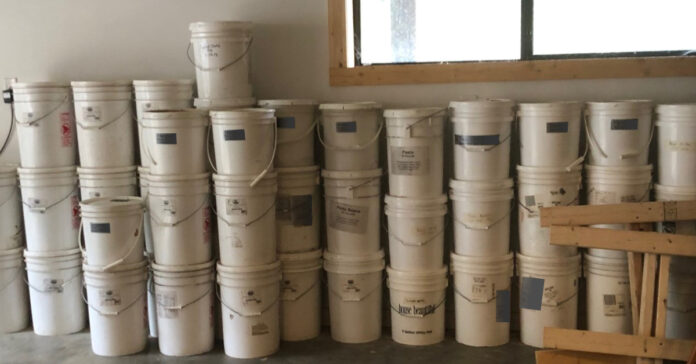Yesterday, I said, “I cannot recall a time when the possibility of needing our preps was closer that it is today.” On Saturday night, Iran fired five missiles at the American embassy in Iraq, proving my point. We are being tested, and our leadership is failing.
You may ask, if the situation is that serious, what am I doing to prepare? Am I making last-minute additional preps?
Our preparedness level is high. We live at our remote retreat and are pretty well prepped. We have shelter, wood heat, gravity-fed water. Our larder is full, as is our prepper pantry and our long-term food storage. We raise chickens and bees. We garden and can grow micro greens and sprouts indoors.
But there is always more that can be done. Much of what I have been doing is updating our planning.
Our Preps
I recently conducted a full inventory of our storage food, identified weak points, and topped off a few things. For example, I bought an additional 100 pounds of hard red winter wheat. If things haven’t improved in another month or two, I may buy another 100 pounds. I also continue to make small acquisitions of canned goods for our prepper pantry. This is based on the theory that you can never have enough.
I have ten weeks of chicken food on hand, which will last even longer once the weather warms up, the weeds and clover grow, and the chickens can free range.
We have filled the new raised beds and are ready to plant. We have a good supply of heirloom seeds and are ready to plant both indoors and out.
I have also purchased sufficient lumber and other supplies to do some work around our house. This will include putting more shelves in the garage for additional storage.
People Preps
I’ve been in communication with people who are expected to bug out here, reviewing lists, timetables, and plans. They know what to bring and I know what situations might cause them to bug out.
When making plans to accommodate others, the most important thing for them to bring are their clothes and footwear, their medicines and personal hygiene items, and anything they cannot live without.
In our case, we are suggesting our fellow preppers make the following a priority:
- Warm bedding and pillows because we may not have enough to go around. This includes sleeping bags.
- Personal weapons, especially those on which we have standardized: AR-15s, M14/M1As, Remington 870s, Ruger 10/22s, Glocks and 1911s. Other guns in the same calibers are welcome, but if you bring a non-standard caliber like a .300 Winchester magnum or a .270, you better bring plenty of ammo and spare parts as we don’t stock it. This category includes other tactical equipment, such as web gear, night vision, binoculars, etc.
- Pressure canner and spare lids. We have a large pressure canner, but can always use more. One of the best ways to bring jars is to bring them full of food. Full jars take up the same space in a bugout vehicle as an empty jar.
- Wood harvesting tools, manual and power, including chains saws and spare parts and gas cans.
- Flashlights, lanterns, batteries, and chargers.
- Any food is welcome. Some will bring lots, some very little.
We also recommend they bring cash or silver. If they get here before the panic sets in and things shut down, they can take advantage of our local stores to buy anything they might have forgotten or wish they had more of. This could be anything from flannel-lined Carhartt pants to potato chips.
The Convoy
One family with adult children may arrive in a three-vehicle convoy. They have two pickup trucks, and SUV, and a 12-foot trailer, so they can bring quite a bit. Another has a large camper. They won’t be able to get the camper up our hill or down our driveway, but they park it and we can ferry supplies up the hill in a pickup truck.
As with most bugouts, leaving ahead of the crowd makes all the difference. If someone pulls the trigger and then nothing happens, we’ll just consider it a dry run.
Don’t Hold your Breath
As a kid, I grew up hearing them test the air-raid siren on the first Thursday of every month. All my life, there’s always been something that could go wrong. Most of the time, it either doesn’t, or it isn’t that bad.
Just as you should be aware of your surroundings, you should be aware of what is going on in the world around you. You should be prepared for the worst-case scenario, but don’t pin your hopes or your fears on it. Prep to save your life, but don’t let it prevent you from living your life.
Awareness and preparedness go hand-in-hand. Knowing that something could go wrong and making plans in case it does will help you keep your head above water while those around you are floundering. Awareness can help you avoid the shock of bad news and allow you to fight or take flight while others freeze or break down. Awareness and a plan will help you head to your bug out location before the masses get the same idea. Preparedness and planning will help you survive those chaotic early days.
I’m aware that the sh*t could hit the fan pretty much any day, but I am comfortable with our preparedness level. That allows me to sleep at night.








